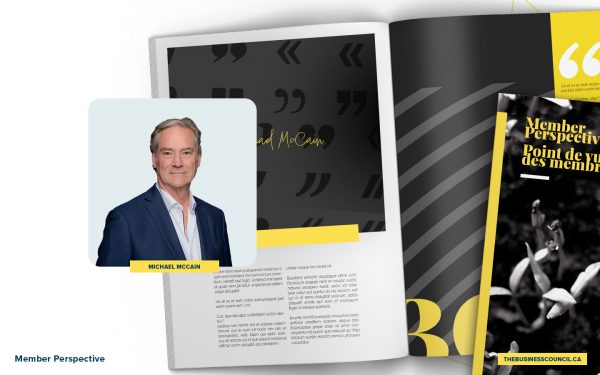The panacea to plastic waste: Invest in plastics
As published in National Newswatch
It’s understandable to be outraged by the islands of plastic waste in our oceans or the mountains of plastics in landfills around the world. It should never have come to this, and a truly revolutionary material should have been managed more responsibly from the outset. Plastic is a high strength, lightweight marvel and with a more holistic approach to designing the lifecycle of plastics, we can still benefit from it while greatly reducing the associated harm to the planet. We know plastics help reduce the weight of vehicles which improves fuel economy and reduces emissions; they keep food fresh longer which reduces waste; they yield more technical clothing, increase the durability of tools and the list goes on. Thankfully, human ingenuity is hard at work reimagining how we can better make, use, reuse and regenerate plastics – to the advantage of both people and the planet.
The challenges around managing plastic waste lie deeply in how volume and convenience were plastic’s original focus, not recycling or reusing. We are moving away from this model to a circular economy, but to be successful we will need a well coordinated and synchronized orchestra of innovation from the plastic industry, expedited investments in recycling infrastructure and an absolute shift in mentality and culture in consumer behaviour. However, to achieve this we need to come back to the basics and unite the plastic value chain on a common front against waste.
First and foremost, we need to focus on design as the core of any circular system. For the most part, this is preached but not followed by plastic users, brand owners and plastic manufacturers. To meaningfully address plastic waste, design must be the first and biggest pillar to tackle. It is counterintuitive, but we need to change the way we innovate, focusing not only on polymer creation but also their “creative destruction” for reuse. Design thinking is a major sustainability driver that has yet to be fully added into the plastic equation.
After design, we should focus on the most obvious next workstream: recycling. Recycling rates, both globally and in Canada, are far less what they can and need to be. Specifically, in Canada, only about 10% of plastics are being recycled, yet most plastics are recyclable. There is a big difference between something that has been recycled versus something that has the potential to be recycled. The sustainability value cannot be wider, one has gone through a loop and the other awaits in the queue.
Three recycling recovery processes can improve to bridge this gap: mechanical, chemical, and organic. Mechanical recycling transforms plastics into a secondary raw material without significantly changing the structure of that material. It should be the easiest and most cost competitive of the three; however, mechanical recycling has been set back by lack of robust sorting technology, product contamination and jurisdictional scalability. For recycled plastic to become competitive, it needs to compete with virgin plastic material and that can only be done with the right infrastructure in place. The need for immediate investment and innovation in this area is a precondition for mechanical recycling to succeed.
Chemical recycling or ‘advanced recycling’, is a circular alternative to the end of life of plastic streams that are more challenging to recycle. Chemical recycling breaks down used plastic into its original building blocks, to create new plastic products and other important chemistries. BASF is one of the leading companies investing in this area and making advanced recycled plastics available to the market and consumers. Like mechanical recycling the challenge lies in its specific infrastructure, logistics and technology scalability. Progress can only be made with focused and purposeful investment.
The final and often most underestimated workstream is compostable plastics. Compostable plastics have until now only scratched the surface of their true potential. They are an excellent packaging alternative for food. At the end of its life, compostable plastic can be collected with organic waste and transformed into compost, reducing the greenhouse gas emissions from food which would otherwise be sent to landfill. The biggest challenge for this innovative technology remains the infrastructure and logistics needed for proper waste collection, compost conversion, and sustainable outlets for the resulting biogas and compost generated. Without investments in integrated waste management systems for organic materials and proper education of the general public, the compostable plastic potential will never fully materialize.
As the fight against plastic pollution builds unprecedented momentum, we should not only be clear of the current challenges but also the industry solutions that are already available. These solutions need smart regulations that trigger more investment in plastic innovation and infrastructure, not less. Intelligent EPR (Extended Producer Responsibility) programs need to be coupled with incentives for the industry and consumers to make the right choices and decisions.
As consumers demand solutions to our plastic dilemmas, the reimagination of a circular economy is beyond the resources of any single group. Instead, public and private collaboration and synchronization will be key to lay the groundwork for a circular plastic economy. With that foundation in place, investment will follow, and plastic will become the fully sustainable and life-enhancing material it was always supposed to be.









